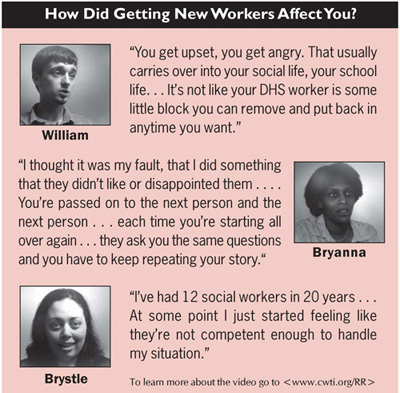 |
 |
 |
©
2007 Jordan Institute
for Families

Vol.
12, No. 1
January 2007
How Worker Turnover Affects Kids in Foster Care
There are all sorts of reasons to see our failure to hang on to good child welfare workers as a problem.
For the people in the field, there are pressing concerns about stress and increased workload. When a worker departs, supervisors and colleagues must take on that person’s responsibilities, often for months.
Then there’s the cost. Conservative estimates are that agencies spend $10,000 to recruit, hire, and train every single replacement child welfare worker (CSSP, 2006).
Of course the most significant impact is felt not by agencies but by families and children, who experience lower quality services and poorer outcomes as a result (GAO, 2003).
One of the most vivid illustrations we have encountered of the impact poor retention has on kids in care is a video called When the Child Speaks: Impact of Caseworker Turnover on Children and Youth. Filmed and edited for Maine’s Child Welfare Training Institute by a youth in care, When the Child Speaks features foster care alumni talking about how they have been affected by worker turnover.
The excerpts below are a powerful reminder of the personal costs of turnover borne by the children and families we serve.
